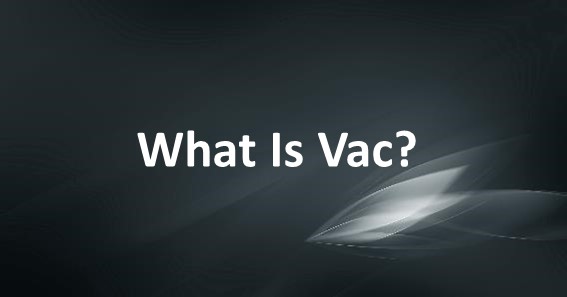Are you curious to know what is vac? You have come to the right place as I am going to tell you everything about vac in a very simple explanation. Without further discussion let’s begin to know what is vac?
What Is Vac?
Vaccines, commonly referred to as VACs, have revolutionized the field of medicine and played a crucial role in preventing and eradicating infectious diseases. With their remarkable ability to stimulate the immune system and provide immunity against specific pathogens, vaccines have saved countless lives and have been instrumental in improving global public health. In this blog post, we will delve into the world of vaccines, exploring their history, mechanism of action, and the significance they hold in safeguarding our well-being.
The Power Of Vaccines:
Vaccines are biological preparations that contain weakened or inactivated forms of pathogens, their toxins, or specific antigens derived from them. When administered, vaccines stimulate the immune system to recognize and respond to these components, thereby training the body to mount an effective immune response against the actual disease-causing agents.
Key Concepts:
- Immunization: Immunization is the process of introducing a vaccine into the body to induce an immune response without causing illness. By imitating the infection, vaccines prompt the immune system to generate specialized proteins called antibodies and activate immune cells that recognize and eliminate the targeted pathogen.
- Herd Immunity: Vaccines not only protect individuals who receive them but also contribute to the concept of herd immunity. When a significant proportion of a population is immunized against a particular disease, it reduces the likelihood of the disease spreading within that community. This protects vulnerable individuals, such as those who cannot receive vaccines due to medical reasons, by minimizing the overall circulation of the pathogen.
- Disease Prevention: Vaccines have been instrumental in preventing the spread of infectious diseases, both common and deadly. From childhood immunizations against diseases like measles, mumps, rubella, and polio to vaccines targeting influenza, hepatitis, human papillomavirus (HPV), and more, vaccines have significantly reduced the burden of these illnesses and their associated complications.
- Eradication Efforts: Vaccines have proven to be instrumental in eradicating diseases from the planet. One of the most notable examples is the successful eradication of smallpox, achieved through a global vaccination campaign. Efforts are also underway to eliminate diseases such as polio and measles from certain regions, highlighting the power of vaccines in public health achievements.
- Vaccine Safety: Vaccines undergo rigorous testing and monitoring to ensure their safety and efficacy. Regulatory bodies, such as the U.S. Food and Drug Administration (FDA) and the World Health Organization (WHO), evaluate vaccines based on comprehensive clinical trials, post-licensure surveillance, and ongoing monitoring of adverse events to ensure their quality and safety.
Conclusion:
Vaccines have had a profound impact on global public health, preventing illness, reducing complications, and saving lives. They are one of the most effective tools available to combat infectious diseases and have played a vital role in reducing the burden of numerous illnesses worldwide. Through their ability to stimulate the immune system and provide immunity, vaccines protect individuals, communities, and future generations from the devastating effects of preventable diseases.
It is crucial to stay informed about vaccines, their benefits, and any concerns surrounding their use. By understanding the science behind vaccines and the significant role they play in safeguarding our health, we can make informed decisions and actively contribute to maintaining high vaccination rates and public health.
Remember, vaccination is not just a personal choice but a collective responsibility towards promoting the well-being of our communities. Let us embrace the power of vaccines and work together to build a healthier and safer future for all.
If you find out some similar topics then visit here to https://seefounder.com/
FAQ
What Does 120 Vac Stand For?
The household electricity our North American appliances use is delivered at 120VAC (volts alternating current) 60 Hz. (60 cycles/second).
Is Vac Different Than Volts?
There is no such thing as VAC power – it is just AC power. When you see 110 VAC on an appliance, it means 110 volts AC power. Voltage is a measure of “circuit pressure.” It refers to how hard the electricity pushes through a circuit.
Is Va And Vac The Same?
Nope. They are completely different things. VAC = voltage, AC. VA = volts x amps, a measure of the maximum continuous power output of the transformer.
Is Vdc The Same As Volts?
It is represented by the letter V and is measured in units of volts (abbreviated as V). The standard unit for Vdc is the volt (symbol: V). Volts AC, on the other hand, is a measure of the potential difference between two points in an alternating current (AC) circuit.
I Have Covered All The Following Queries And Topics In The Above Article
What Is Vac
What Is A Vac Ban
What Is A Shop Vac
What Is A Wet Vac
What Is Vac Voltage
What Is Vac In Electrical
What Is The Best Shop Vac
What Is Vac In Csgo
What Is Vac On Water Heater
What Is Vac Electrical
What Is Vac In Project Management
What Is Vac Medical
What Is Vac In Csgo
What Is Vac And Vdc
What Does Vac Mean Voltage
600 Vac Meaning
115 Vac Meaning
What Is Vac
What is the full form of VAC

14 thoughts on “What Is Vac?”
Comments are closed.